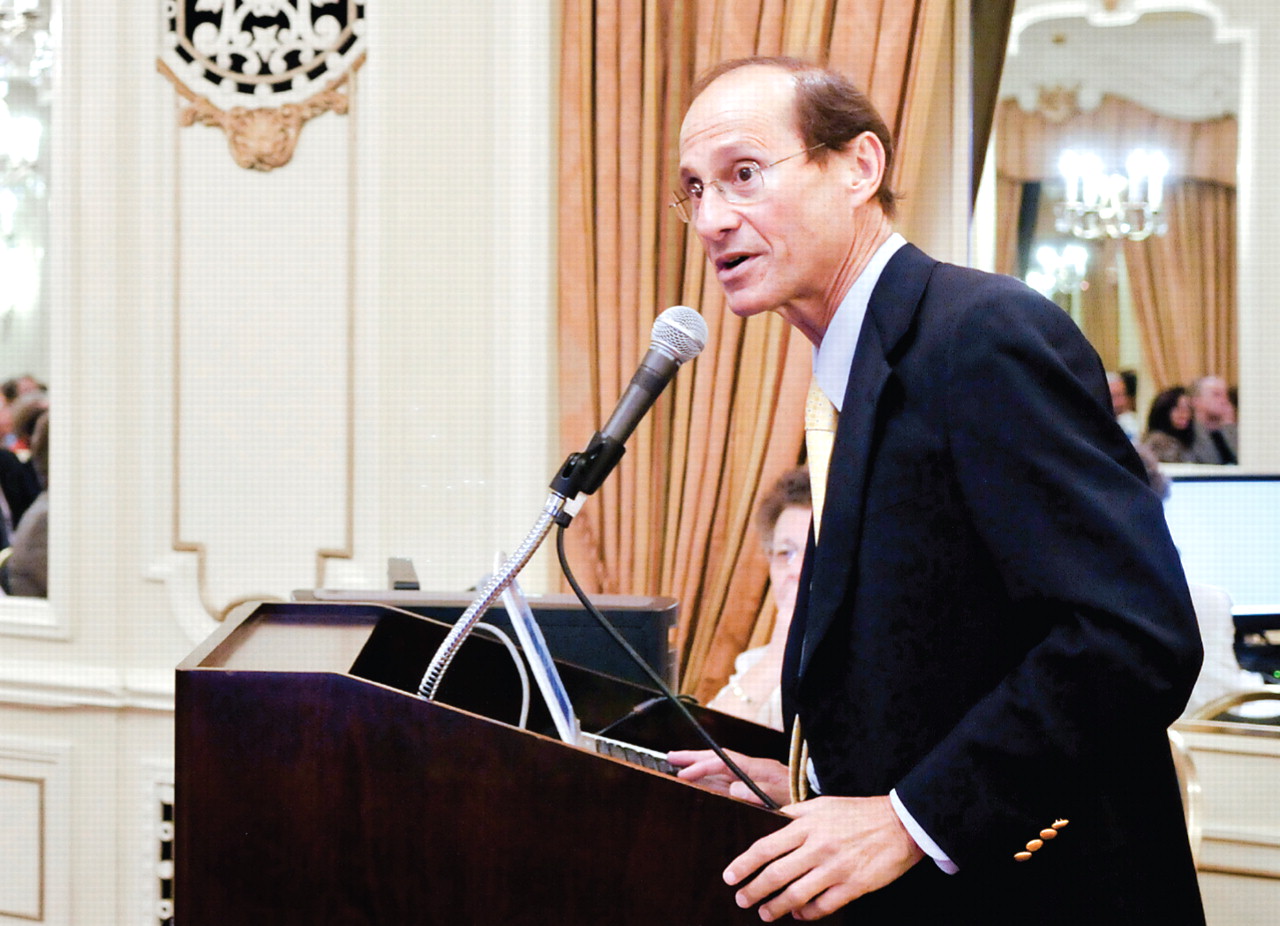Psychiatry and neurology should marry and become one profession, said Stuart Yudofsky, M.D., M.P.H., at last month's APA Institute on Psychiatric Services in Chicago.
In a lecture titled “Neuropsychiatry and the Future of Psychiatry, Neurology, and Psychiatry,” Yudofsky charted a winding path of understanding about the human brain and behavior—from the ancient Greek conception that insanity was inflicted by the gods and treated by priests, through Hippocrates, Plato, medieval Christianity, the Enlightenment, the origins of psychiatry and neurology, psychoanalysis and the demedicalization of psychiatry, up to the birth of a new subspecialty with the formation in 1988 of the American Neuropsychiatric Association.
He said that the logical endpoint of this journey is the merger of psychiatry and neurology.
“I believe psychiatry and neurology should be combined into one profession,” he said. “It would obviate the mind-body dualism that is the source of all stigma against mental illness, and against us [as psychiatrists], and it would reestablish psychiatry as a medical specialty.”
Yudofsky is the D.C. and Irene Ellwood Professor and Chair of the Menninger Department of Psychiatry and Behavioral Sciences at Baylor College of Medicine.
He cited examples of recent research that point the direction toward a 21st-century neuropsychiatry based on a genetic and neuromolecular understanding of behavior. Among these is a remarkable study conducted at Baylor and published in the August 8 Science demonstrating stark differences in brain functioning among patients with borderline personality disorder (BPD) in areas of the brain central to interpersonal trust.
The study employed an “economic exchange game” that depends on cooperation as a proxy for studying interpersonal trust; the game involves an“ investor” and a “trustee” and a simulated stock market.
Cooperation occurs when the investor and trustee act in a manner that mutually benefits both players: if an investor sends $20 to a trustee and the trustee splits the tripled investment ($60) with the investor, both the investor and trustee profit. The investor earns $10 more, and the trustee earns $30 more than if the investor had sent nothing.
However, if a trustee does not repay at least the amount invested, the investor accrues no benefit from the exchange, likely triggering smaller subsequent investments. Thus, increased cooperation is linked with increased money exchanged across the course of the 10-round game.
In the study, subjects diagnosed with BPD played the trustee role against an investor without a psychiatric disorder. In early rounds of the game, investment levels did not differ between subjects partnered with BPD trustees and subjects partnered with healthy trustees. However, in late rounds, investments were significantly lower for dyads with a BPD trustee than in control dyads with a healthy trustee. This downward shift in investment levels for dyads with BPD trustees reflects a break in cooperation.
But researchers also tested the ability of subjects to repair broken cooperation, since breakdowns are common in interpersonal relations—for many reasons other than broken trust—and successful social agents must sense or even anticipate these failures and select actions to repair them.
So the researchers focused on rounds in which cooperation was low—that is, rounds in which investments of $5 or less were made. These typically occur late in the game in response to “untrustworthy” returns by a trustee; such ruptures of cooperation provide the trustee an opportunity to repair the broken cooperation by repaying a large fraction of the tripled investment—thereby signaling their trustworthiness in the presence of low offers—a response the researchers termed“ coaxing.”
Remarkably, comparison of healthy trustees with BPD trustees found healthy players to be almost twice as likely as BPD players to coax in the presence of low offers—that is, to repay a third or more of the investment.
Brain scans of the players revealed neuroanatomical correlates to these behaviors: activity in the anterior insula, a region known to respond to norm violations across affective, economic, and social dimensions, strongly differentiated healthy participants from individuals with BPD. Healthy subjects showed a strong linear relationship between anterior insula response and both magnitude of monetary offers received from their partners (input) and the amount of money repaid to their partners (output).
In stark contrast, activity in the anterior insula of BPD participants was related only to the magnitude of repayment sent back to their partner (output), not to the magnitude of offers received (input).
“These neural and behavioral data suggest that norms used in perception of social gestures are pathologically perturbed or missing altogether among individuals with BPD,” the researchers wrote.
Yudofsky pointed out that neurology has its own forms of“ reductionism” that need the expertise of psychiatry to correct. He cited the example of a teenage patient who experiences an epileptic seizure in public that leaves the individual handicapped for the rest of his or her life.
“The neurologist looks for the lesion and treats with an anticonvulsant and says 'we've solved the problem,'” Yudofsky said.“ But we know that kid's problems are just beginning.”
An abstract of “The Rupture and Repair of Cooperation in Borderline Personality Disorder” is posted at<www.sciencemag.org/cgi/content/abstract/321/5890/806>.▪

